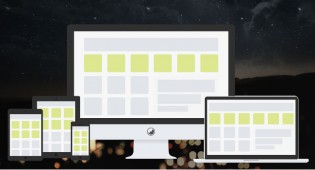Using the Canonical Tag in SEO Campaigns

A bit more than a year ago, the 3 big search engines (a.k.a. Google, Yahoo and MSN) came out with a revolutionary agreement in which they agreed on the use of a common tag to improve the quality of their search results.
This tag is the canonical tag.
The question now is, are the engines really using it? Also, how important is the canonical tag for SEO results? With this article, I’m going to try to answer these questions from my point of view, but feel free to add yours through comments at the end.
Let’s start by defining what the canonical tag does: It offers a method to decrease duplicate content.
Duplicate content could appear for many different reasons inside your website, the most common reason being several URLs point to the same Web page. This can come up for many reasons.
– Analytics tracking codes added on URLs (i.e. Omniture).
– Pages generated from a search box with different options, but at the end show the same product.
– Affiliate IDs attached on the URLs.
…and so on.
So for example, let’s say you have an eCommerce site selling adult content.
The canonical URL is [URL]http://www.example.com/adult-content[/URL], and could be reachable through:
Search box: [URL]http://www.example.com/adult-content?=01?cat=main[/URL]
Affiliate ID: [URL]http://www.example.com/adult-content?id=001[/URL]
Analytics tracking: [URL]http://www.example.com/adult-content-Y3434030Y[/URL]
Canonical: [URL]http://www.example.com/adult-content[/URL]
All of these 4 different URLs are displaying the same identical page.
Now, how can the search engines understand which is the real page? If you don’t specify, crawlers will waste time crawling the same content with different URLs and your external links efforts could be diluted.
That’s why engines worked to improve things to make it easier to create the canonical tag. This is how works:
Specify the canonical version using a tag in the header section of the page as follows:
That’s it!
This tag work as a 301 redirect for all URLs that display the page with this tag, but it redirects just search engines, not users. Users will see the same URLs.
Sound clearer now?
At the beginning when the search engines launched this tag, I was a bit skeptical. I saw it as a huge revolution for SEO, but I was not sure it was working because engines defined it as a suggestion and not as mandatory. But of course, I used it on my sites.
Well, more than one year after they launched it I can certainly tell you: it works! I have used canonical tags on thousands of pages to remove duplicate content and affiliates pages of the SERPs, and they have worked perfectly.
The duplicates were pages generated from search forms, quite common across all sites, and most of the time webmasters don’t know that and probably links some URLs generated from the search box without linking the canonical page. That equals links lost. With the can tag on, it’s not important what URL is used to get to that page, it will normalize into the preferred URL.
Canonicals have worked as engines promised. As I have said, I was not expecting it, but it really works.
Even more, what I noticed recently, and confirmed with other experts in the market, is Google now gives more value to the canonical tag as opposed to the 301 redirect. Especially redirects between domains. So my suggestion is to use it!
One important thing you need to watch: be careful when you are putting the canonical tag in place because if you tag an important page of your site with a wrong canonical URL, it’s like telling Google that you don’t want this page anymore, and to please redirect it to the canonical one. Be careful.
Please let us know your personal experience with canonical tags and feel free to post questions.
Comments are closed.





